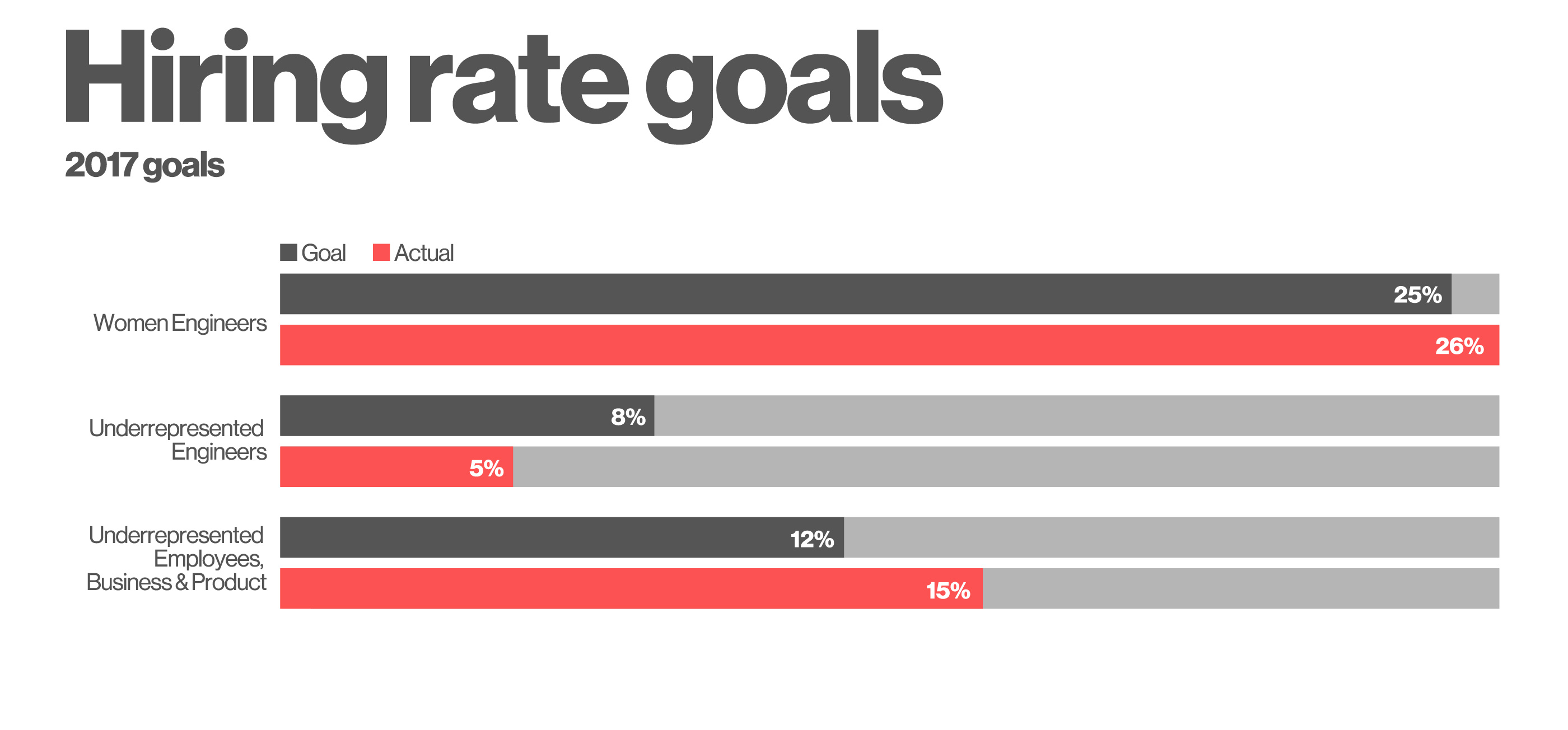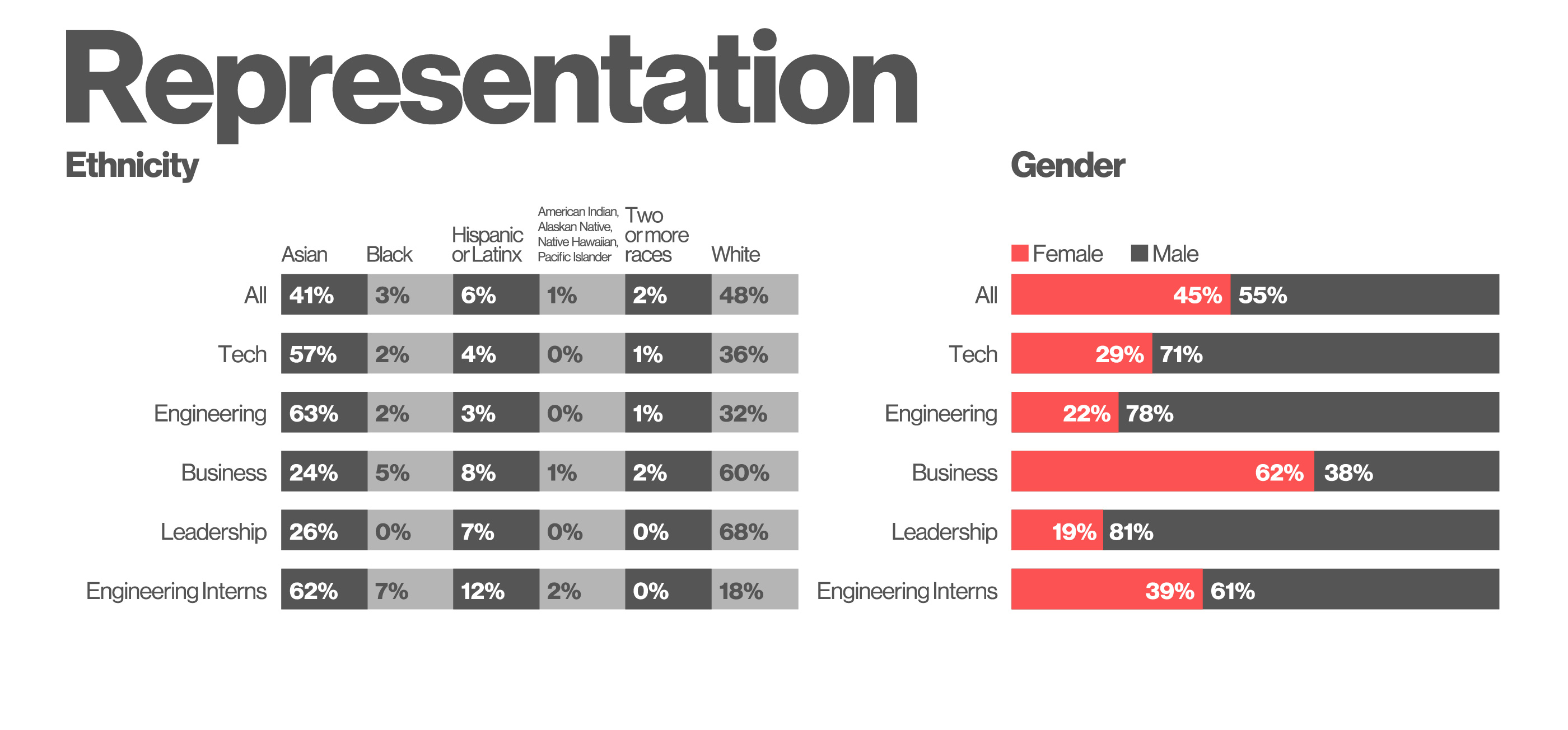Pinterest has unveiled its latest diversity report, showing progress in some areas while missing goals in others. Pinterest hit its goals for women in engineering roles but failed to reach its goal for underrepresented minorities (black, Latinx, Native American) in engineering roles. The opposite happened last year.
Last year, Pinterest’s hiring rate for women in engineering roles was 22 percent, so the company lowered its hiring goals from 30 to 25 percent for 2017. This year, Pinterest increased the percentage of women in engineering roles to 26 percent, surpassing its revised goal. When Pinterest lowered that goal, CEO Ben Silbermann (pictured above) said the company still aspires to 30 percent, but that it would likely take more than 12 months to get there. Pinterest is currently 45 percent female and 55 percent male.
Regarding underrepresented minorities in engineering roles, Pinterest set a goal to maintain a hiring rate of at least 8 percent. This year, Pinterest only reached a 5 percent hiring rate for full-time engineers in underrepresented ethnic backgrounds. Last year, Pinterest surpassed its goal with a hiring rate of 9 percent.
“Last year we did very well there,” Pinterest Head of Inclusion and Diversity Candice Morgan told me over the phone. “This year, obviously we did better than we did before we had goals but we want to understand what the trade off was there.”
Morgan noted that Pinterest has very aggressive goals, so that’s one element that may have played into it missing its hiring rate target. But competition among tech companies is also fierce.
“We’ve got to be extra, extra, extra vigilant,” she said.
 At a company-wide level, however, Pinterest surpassed its hiring goals for underrepresented people in non-engineering roles. Pinterest hired underrepresented people at a rate of 15 percent across the company. In this area, its goal was 12 percent. Even though Pinterest didn’t hit all of its goals, Morgan said she still feels like Pinterest is ahead of the game.
At a company-wide level, however, Pinterest surpassed its hiring goals for underrepresented people in non-engineering roles. Pinterest hired underrepresented people at a rate of 15 percent across the company. In this area, its goal was 12 percent. Even though Pinterest didn’t hit all of its goals, Morgan said she still feels like Pinterest is ahead of the game.
“Our standards of where we want to be are very high,” Morgan said. “My focus will be how do we keep the momentum in all areas.”
Overall, Pinterest is 48 percent white, 41 percent Asian, 6 percent Latinx, 3 percent black, 2 percent two or more races, and just 1 percent American Indian, Alaskan Native, Native Hawaiian or Pacific Islander in the U.S. Worldwide, Pinterest is 45 percent female. Moving forward, Pinterest says it will have the same hiring goals.

On the inclusion and belonging front, Pinterest has put a good chunk of its resources toward ensuring an overall positive experience for employees, Morgan said.
“We don’t want a revolving door,” she said, noting that it doesn’t matter if a company numerically looks good on paper but “people don’t feel engaged.”
That’s why Pinterest takes all of its new hires through unconscious bias training within the first week of joining the company. Pinterest also requires its managers to go through training on inclusive management, and then takes it a step further by rating senior leaders on how well they do on inclusion.
“It’s important the business is actually on the hook for it,” Morgan said. “Their job is to make sure it’s enforced in their teams. It’s tied into their goals and therefore compensation.”
In order to see if and how well these efforts are working, Pinterest conducts surveys every other month, with 20 percent of the questions pertaining to inclusion, belonging and diversity. In light of the sexual harassment and discrimination stories that have come out this year, checking in with employees is perhaps more important than ever. Pinterest has been conducting surveys since before this year, but it has revamped its sexual harassment training, Morgan said.
“Conversations around harassment and discrimination have gone hand in hand,” Morgan said. “They’re also important to have given we’ve increased the hiring rate of underrepresented employees to 15 percent across the company. We’ve got to make sure people have a way of surfacing if they are experiencing things like discrimination. We need to make sure people feel very safe.”
